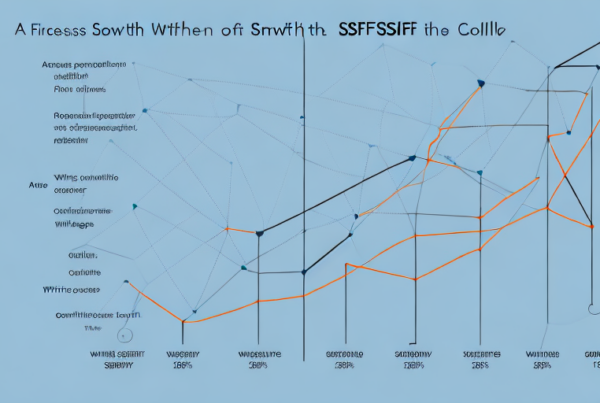The year is 2023 and the Self-Managed Super Fund (SMSF) industry is growing at a rapid pace. More and more Australians are turning to SMSFs as an effective way to build wealth and secure their retirement. However, navigating the complex world of SMSFs can be challenging, especially with ever-changing regulations and compliance measures.
Understanding SMSFs and Their Benefits in 2023
Before delving into strategies for wealth accumulation through SMSFs, it’s important to understand the basics. So, what exactly is an SMSF and why are they growing in popularity?
What is a Self-Managed Super Fund (SMSF)?
Simply put, an SMSF is a private superannuation fund that you manage yourself, rather than having your fund managed by a superannuation company. With an SMSF, you have more control over how your super is invested, giving you the potential for higher returns.
Key Benefits of SMSFs for Wealth Accumulation
In addition to greater control over investment decisions, SMSFs offer several benefits that make them an attractive option for wealth accumulation. These benefits include tax advantages, flexibility, and the ability to pool resources with up to three other members.
SMSF Regulations and Compliance in 2023
While SMSFs offer many advantages, they also come with a range of compliance measures and regulations to ensure they operate within legal boundaries. It’s important to be aware of these measures and stay up-to-date with changes.
Setting Up Your SMSF for Success
Once you’ve decided to set up an SMSF, the next step is to establish a structure that will allow for successful wealth accumulation. This involves choosing the right structure and investments that will suit your financial goals. But what exactly does it take to set up an SMSF for success?
Firstly, it’s important to understand that an SMSF is a type of superannuation fund that is managed by its members. This means that you and your fellow members will be responsible for making investment decisions that will impact the growth of your retirement savings. As such, it’s crucial to have a solid understanding of the investment landscape and the different options available to you.
Choosing the Right SMSF Structure
The SMSF structure you choose will depend on your personal circumstances and investment goals. It’s important to consider factors such as costs, asset protection, and estate planning when deciding which structure is right for you. For example, some SMSF structures may offer greater protection against creditors, while others may be more flexible in terms of investment options.
It’s also worth noting that the structure you choose will impact the level of responsibility and administrative burden that falls on your shoulders. For this reason, it’s important to carefully consider your options and seek professional advice if needed.
Selecting Appropriate Investments
When selecting investments for your SMSF, it’s important to diversify your portfolio to minimize risk and maximize return. This can involve investing in traditional asset classes such as shares, property, and cash, as well as exploring alternative investments like cryptocurrency and gold.
However, it’s important to note that not all investments are created equal. Some investments may carry a higher level of risk than others, and it’s important to carefully consider the potential risks and rewards of each investment before making a decision.
Balancing Risk and Return in Your SMSF Portfolio
Investing in SMSFs requires a delicate balance between risk and return. It’s important to create a portfolio that is tailored to your risk tolerance level, while also generating strong returns over the long-term. This may involve a combination of different investment strategies, such as growth-focused investments and income-producing assets.
Ultimately, the key to success when setting up an SMSF is to carefully consider your options and seek professional advice if needed. With the right structure and investment strategy in place, you can set yourself up for a financially secure retirement.
Maximizing Tax Efficiency in Your SMSF
One of the biggest advantages of SMSFs is their ability to offer tax efficiencies. By making strategic contributions and investment decisions, you can minimize tax and maximize wealth accumulation.
However, it’s important to note that tax laws and regulations can be complex and subject to change. Seeking professional advice from a financial advisor or accountant can help ensure that you are making the most of your SMSF’s tax efficiency potential.
Utilizing Concessional Contributions
Concessional contributions, such as employer contributions and salary sacrifice contributions, are taxed at a lower rate than your marginal tax rate. By making these contributions, you can reduce your tax liability and increase your super balance.
It’s important to keep in mind that there are limits to the amount of concessional contributions you can make each financial year. In the 2021-2022 financial year, the concessional contributions cap is $27,500 for all individuals, regardless of age.
Additionally, it’s important to consider the impact of concessional contributions on your cash flow and budget. While these contributions can provide long-term benefits, they may also reduce your take-home pay in the short term.
Making the Most of Non-Concessional Contributions
Non-concessional contributions are taxed at your marginal rate but offer the potential for tax-free growth. By making these contributions, you can boost your super balance and take advantage of the tax-free benefits in retirement.
Similar to concessional contributions, there are limits to the amount of non-concessional contributions you can make each financial year. In the 2021-2022 financial year, the non-concessional contributions cap is $110,000 for individuals under 67 years old or $330,000 if you meet the work test or are eligible for the bring-forward rule.
It’s important to note that exceeding these contribution caps can result in additional tax and penalties. Additionally, it’s important to consider your overall financial goals and circumstances before making large non-concessional contributions.
Capital Gains Tax Strategies for SMSFs
Capital gains tax (CGT) is a tax on the profits made from selling an investment. By implementing strategies such as deferring the sale of assets and offsetting capital losses against gains, you can minimize your CGT liability in your SMSF.
It’s important to keep in mind that CGT can be complex and subject to change. Seeking professional advice from a financial advisor or accountant can help ensure that you are making the most of your SMSF’s CGT strategies.
Additionally, it’s important to consider the potential impact of CGT on your investment decisions. While minimizing CGT liability is important, it’s also important to make investment decisions based on your overall financial goals and risk tolerance.
Implementing Wealth Accumulation Strategies
Now that you have set up your SMSF and understand your tax efficiencies, it’s time to focus on implementing wealth accumulation strategies that will help you reach your financial goals.
One of the most important strategies to consider is diversification and asset allocation. By diversifying your investments across different asset classes and sectors, you can reduce risk and increase returns. This can involve investing in both domestic and international markets, as well as exploring alternative investments like commodities, hedge funds, and private equity. By spreading your investments across different asset classes, you can minimize the impact of any one investment on your overall portfolio.
Diversification and Asset Allocation
When it comes to diversification and asset allocation, it’s important to consider your investment goals, risk tolerance, and time horizon. For example, if you have a long-term investment horizon and a high risk tolerance, you may choose to allocate a larger portion of your portfolio to equities. On the other hand, if you have a shorter time horizon and a lower risk tolerance, you may choose to allocate more of your portfolio to fixed income investments like bonds and cash.
Another important consideration when diversifying your portfolio is to avoid over-concentration in any one sector or asset class. For example, if you have a significant portion of your portfolio invested in one industry, such as technology, you may be exposed to increased risk if that industry experiences a downturn. By diversifying across different sectors, you can minimize the impact of any one sector on your overall portfolio.
Property Investment within SMSFs
Investing in property within an SMSF can be an effective way to generate income and accumulate wealth. However, it’s important to consider factors such as location, property type, and rental yields when selecting a property to invest in.
When investing in property within an SMSF, it’s important to understand the rules and regulations surrounding SMSF property investments. For example, SMSFs are prohibited from purchasing property from a related party, and any property purchased must be used solely for investment purposes. Additionally, any income generated from the property must be paid directly into the SMSF.
When selecting a property to invest in, it’s important to consider factors such as location, property type, and rental yields. Properties located in high-growth areas with strong rental demand can provide a steady stream of income and capital growth over the long-term. Additionally, properties with high rental yields can provide a higher income stream to the SMSF.
Using Borrowing Strategies to Boost Returns
Borrowing within an SMSF can be an effective way to increase investment returns and build wealth. However, it’s important to understand the risks involved and ensure that borrowing is done in a compliant manner.
When using borrowing strategies within an SMSF, it’s important to consider factors such as interest rates, loan terms, and repayment schedules. Additionally, it’s important to ensure that the borrowing is done in a compliant manner, in accordance with the rules and regulations surrounding SMSF borrowing.
By using borrowing strategies within an SMSF, you can potentially increase your investment returns and build wealth over the long-term. However, it’s important to carefully consider the risks involved and ensure that you have a solid understanding of the rules and regulations surrounding SMSF borrowing.
Conclusion
In 2023, effective wealth accumulation through SMSFs requires a solid understanding of the benefits, compliance measures, and smart investment strategies. By considering the strategies outlined in this article and seeking professional advice when necessary, you can build a successful SMSF that optimizes your wealth accumulation and secures your retirement.


